Codan 7727
For some reason I now have three HF radios. Picked up the Icom 7100 to start with as it’s one of those shack-in-a-box radios that does (nearly) everything. Managed to end up with a Codan 9323 while buying a Codan 9350 for a very good price (“local pickup only” in a location that is not what you’d call “convenient” but we happened to be going past on a massive road trip…)
But I found a Codan 7727 up for sale. According to the listing, the previous owner was a ham radio operator… but it’s also described as being a CB, which I don’t think I need to point out it’s not, so I’m not exactly sure what it’s set up for.
Here it is in all its glory, painted in a nice 70s green. It’s a little rusty. It’s clearly seen better days.
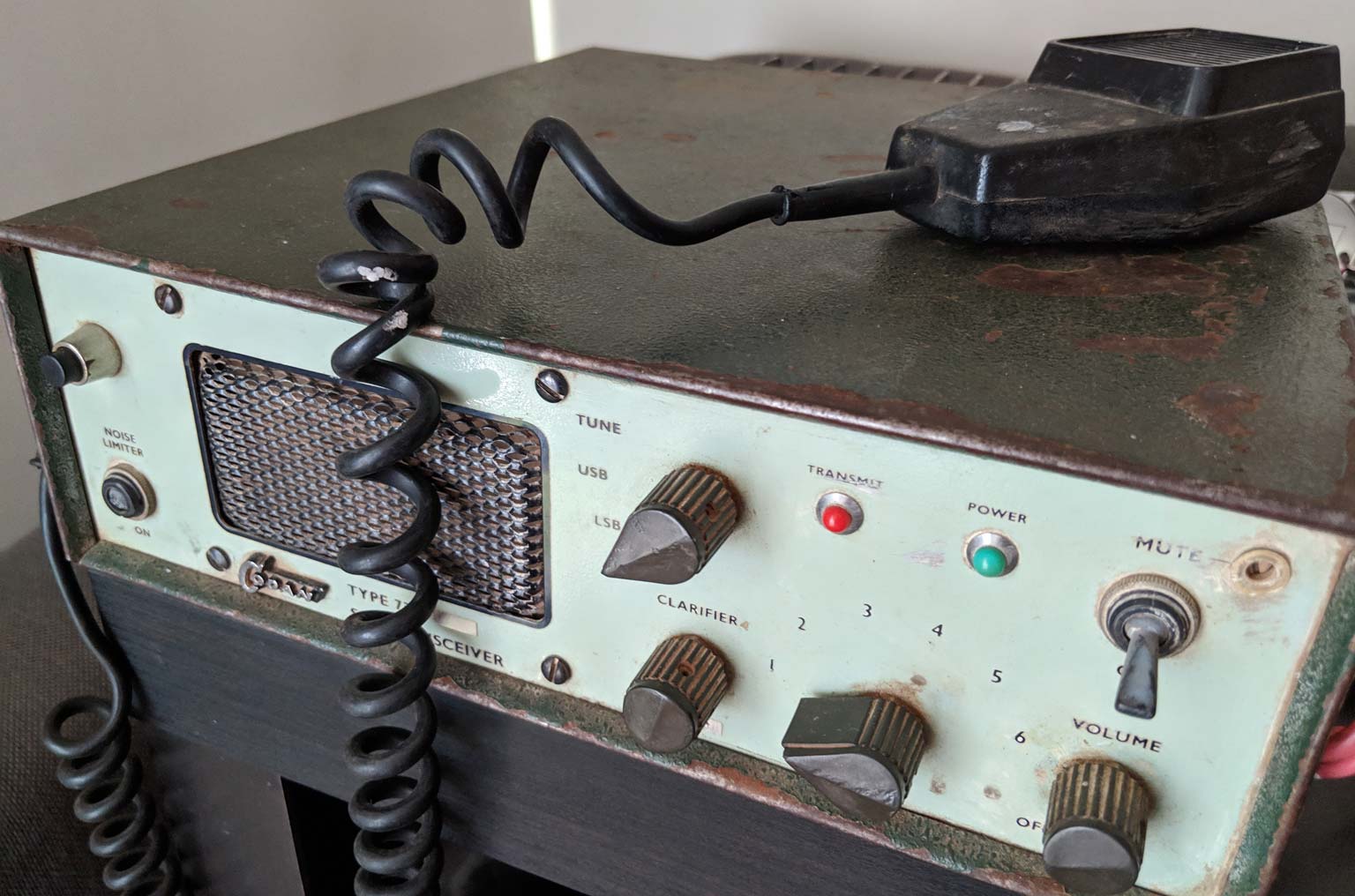
So let’s open it up and take a look at the dusty inside.
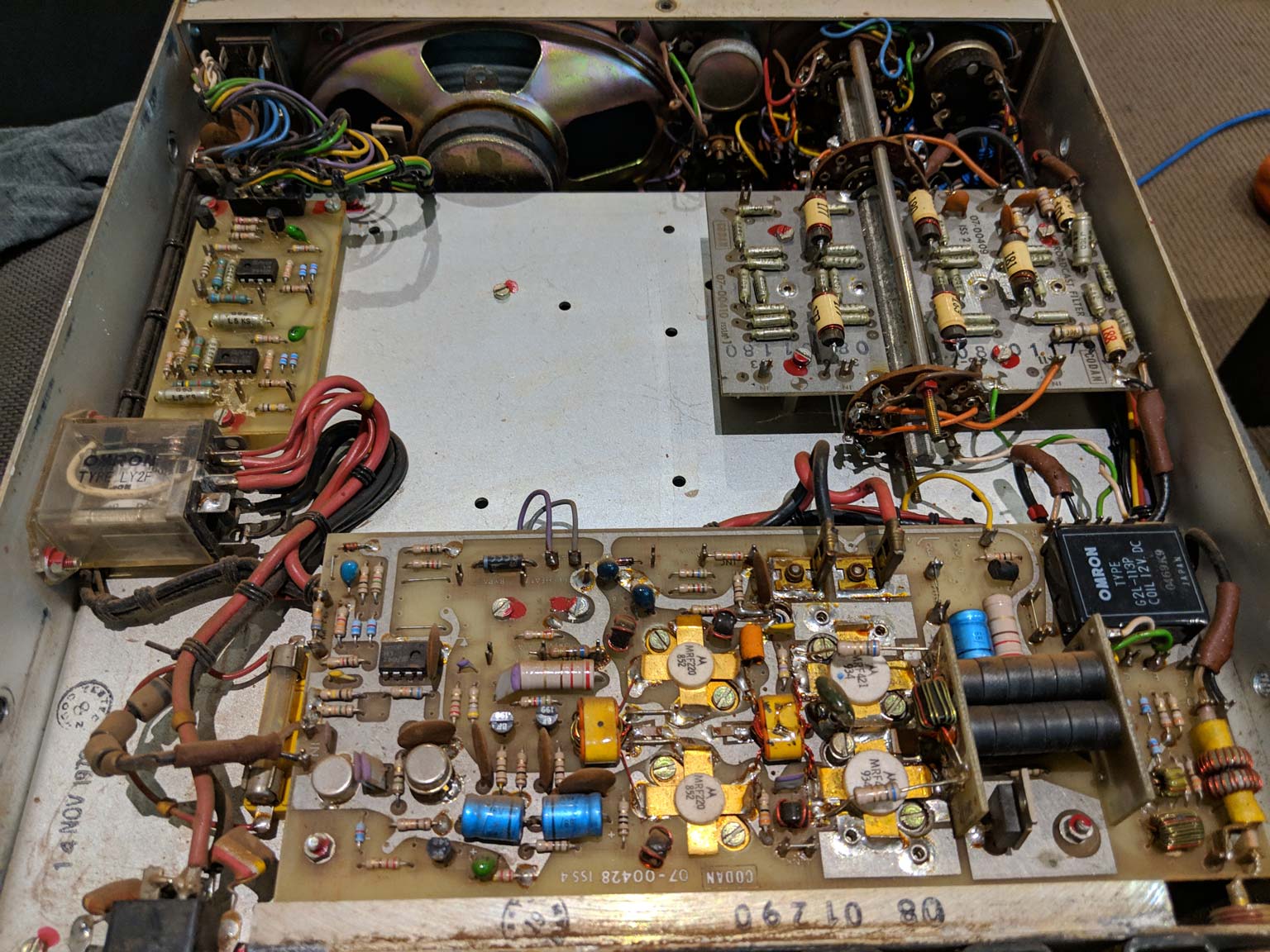
Top left appears to be a two-tone signal generator for summoning the RFDS. This is probably a clue that it’s not set up for amateur radio, but there’s no guarantee it hasn’t since been modified.
Top right are the filter boards.
Along the bottom is the output final amp - antenna connector is in the bottom right.
In the bottom left, you can see the manufacture date stamp of 14 November 1979, making this radio 40 years old. It’s the earlier 6-channel model not the later 10 channel.
And let’s take a closer look…
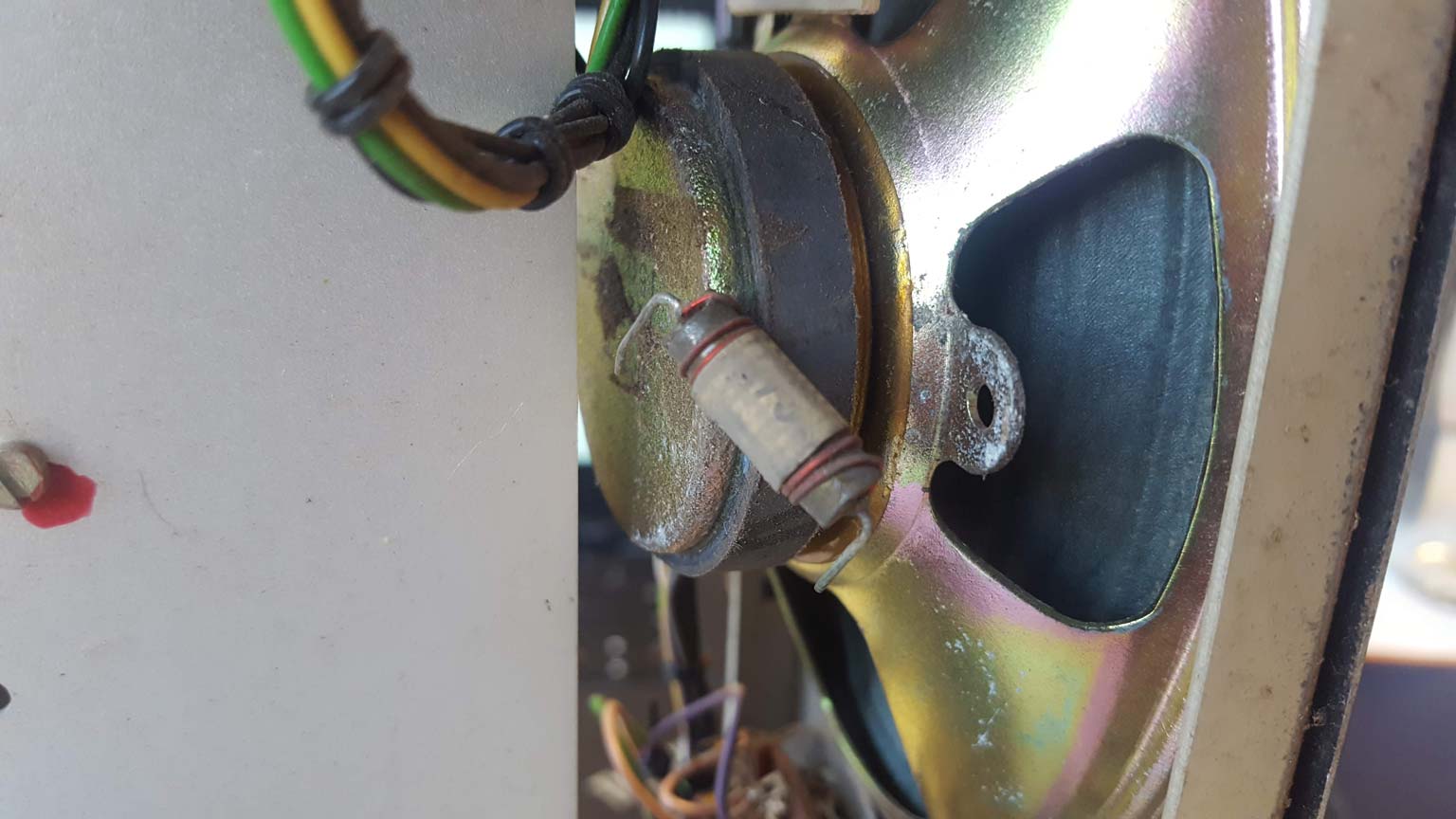
Oh. That probably doesn’t go there.
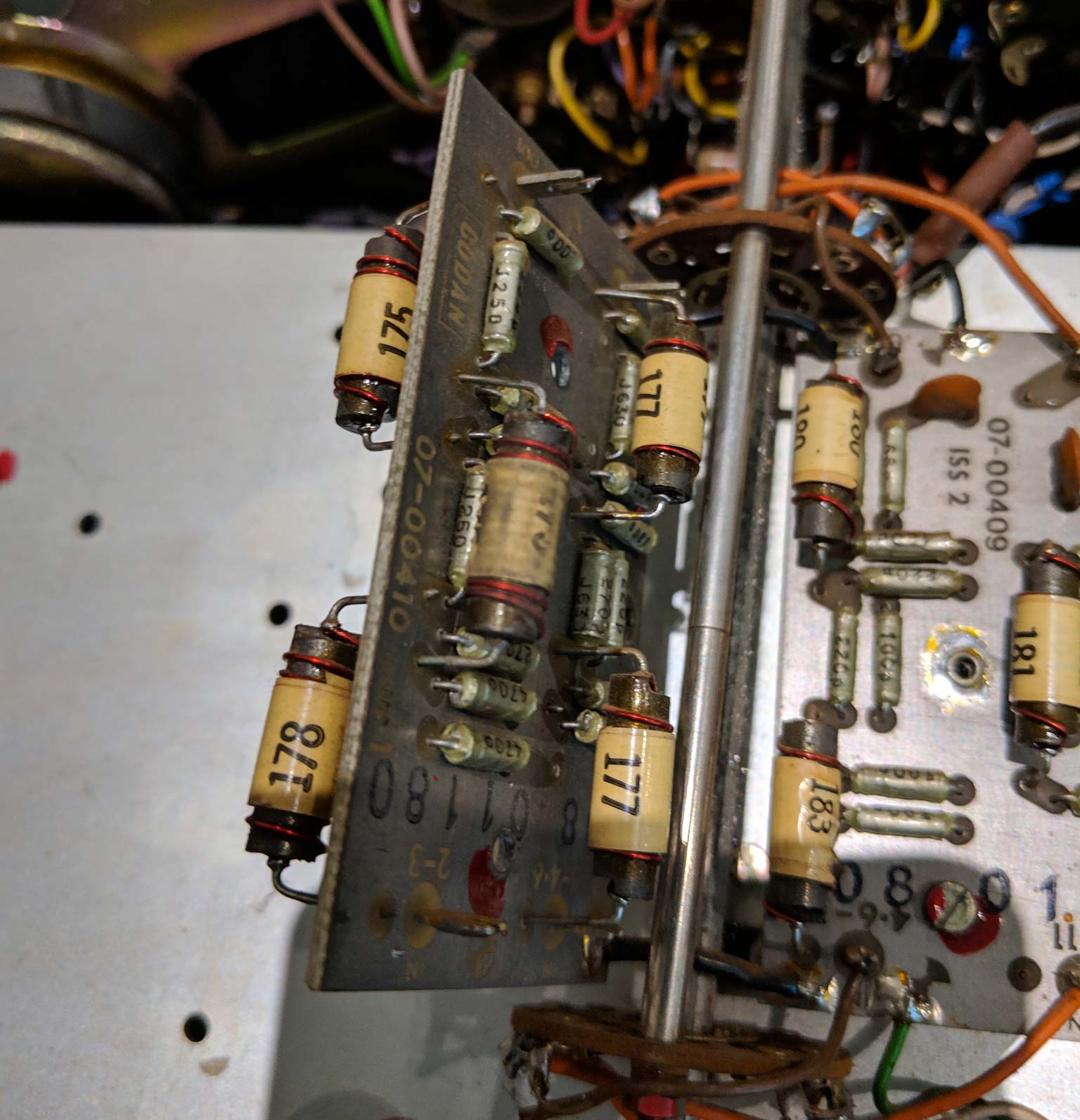
But after some consultation of the service manual, it has been soldered back in where it belongs.
Removing the cover on the underside will reveal the exciter board, which generates the modulated signals from the input audio. Being a piece of 1970s equipment, setting the frequencies wasn’t a matter of plugging it into a computer and running some software with a very bad UI. On this radio, six crystals are used, one per channel.
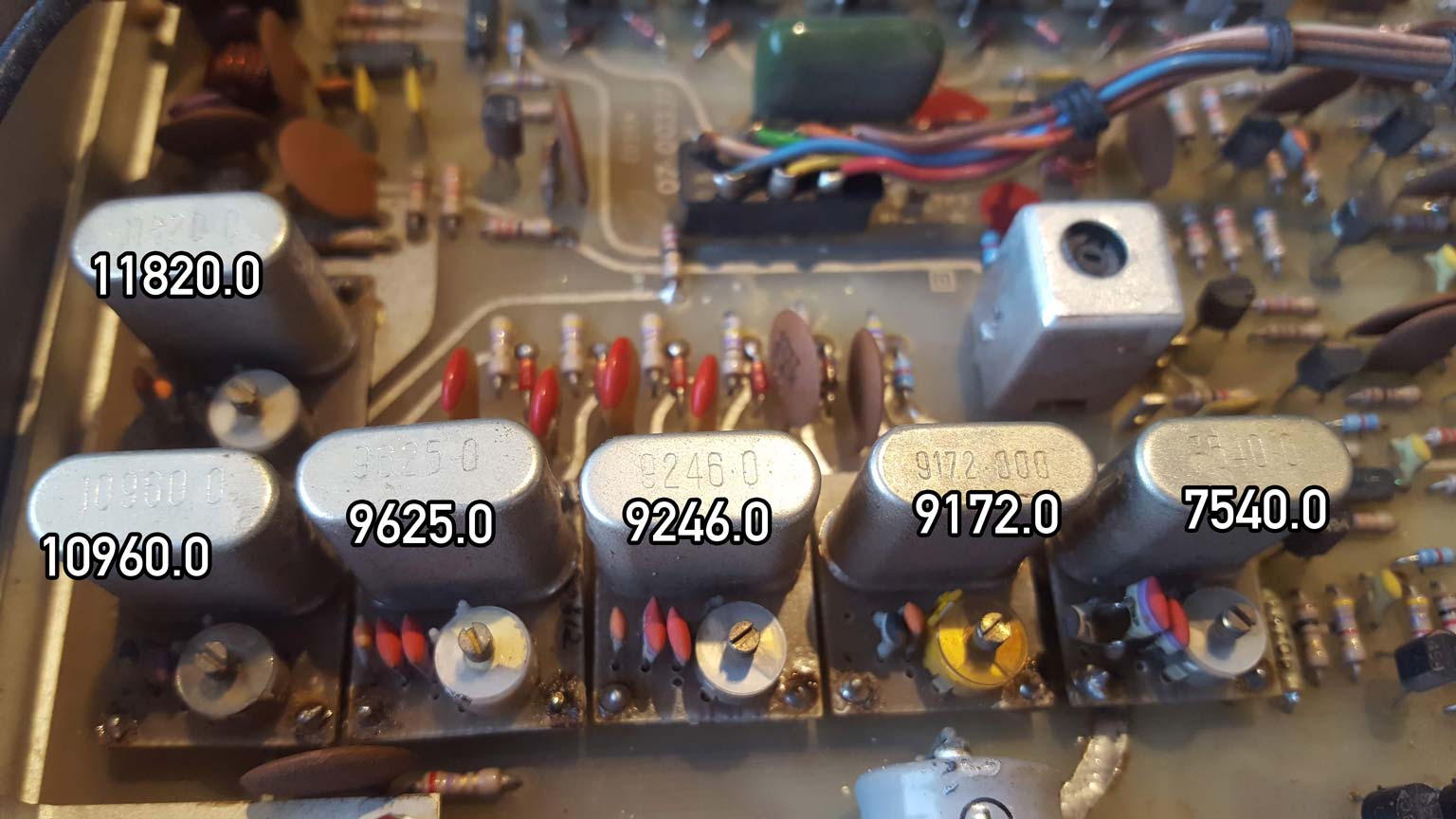
But those aren’t the actual output frequencies.
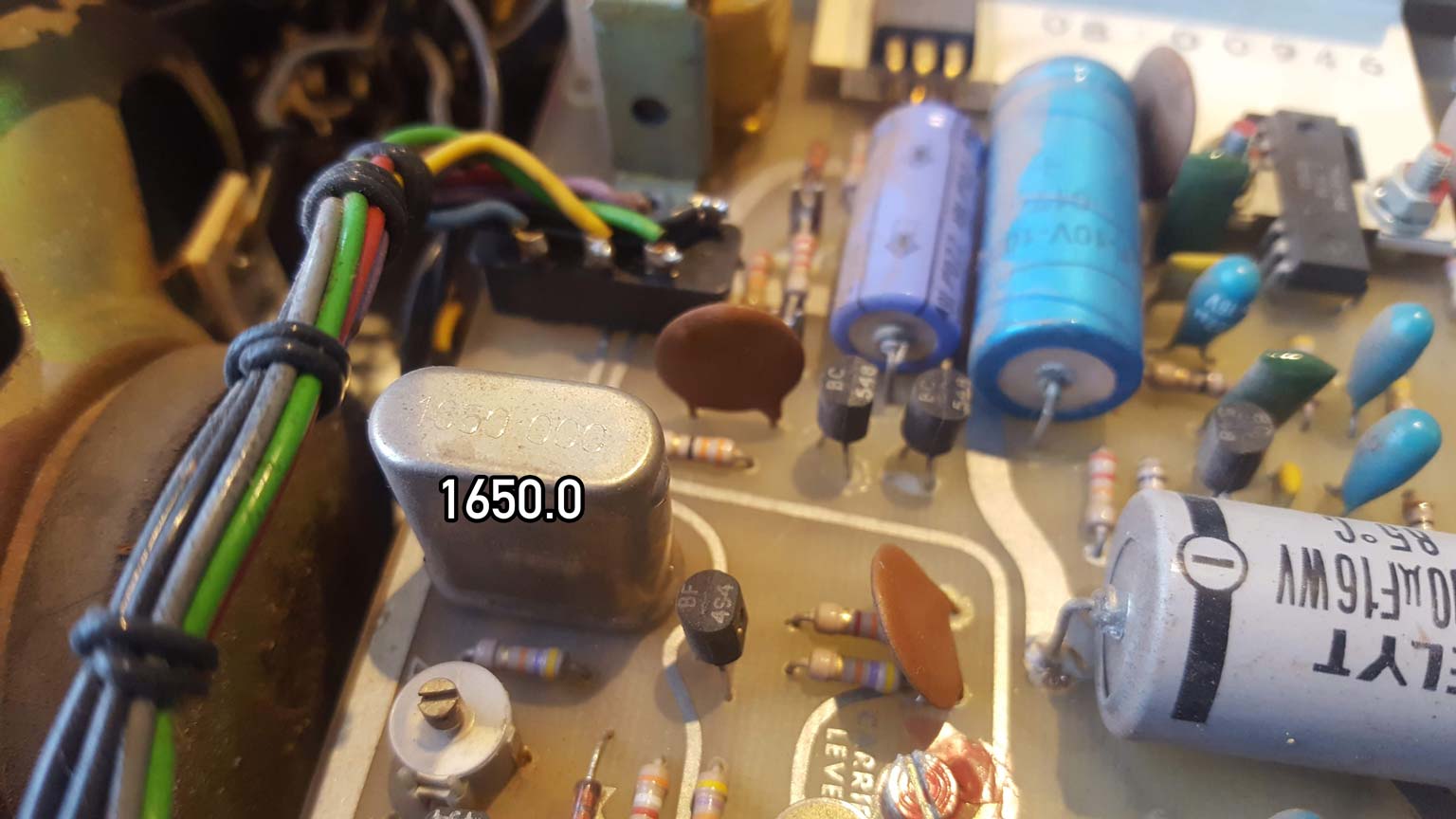
The outputs are mixed with a 1650kHz intermediate frequency. In upper sideband mode, we need to subtract this from all the above numbers.
| Ch | Crystal | Frequency |
|---|---|---|
| 1 | 7540 | 5890 |
| 2 | 9172 | 7522 |
| 3 | 9246 | 7596 |
| 4 | 9625 | 7975 |
| 5 | 10960 | 9310 |
| 6 | 11820 | 10170 |
| What we can clearly see is that not only are none of these amateur radio frequencies, they’re nowhere near the CB band either. But what are they? |
Let’s check the commercial public HF radio networks:
| Callsign | Trading Name | Frequencies |
|---|---|---|
| VKS‑737 | VKS-737 | 5455, 8022, 11612, 14977, 3995, 6796, 10180. |
| VMS‑469 | Reids RadioData | 3995, 5455, 7899, 11612, 14977. |
| VKE‑237 | HF Radio Club | 3890.5, 5135, 11487, 14662, 7899, 6790, 9380, 12197, 15972 |
| VMD‑750 | AusTravel Safety Net | 3175, 5127, 5270, 6793, 7652, 9323, 10203, 13910, 17463 |
| AXD‑888 | Australian HF Touring Club | 3885, 5734, 8043, 12216, 15890.5, 3760, 5105, 6910, 8160, 11016.5, 11013.5, 16321, 11450, 16104.5, 5624, 6820, 7999, 11407 |
After learning that there are more of these than I thought there were, I found that none of these match.
RFDS has 2020, 2260, 2280, 2856, 2792, 4010, 4030, 4045, 4890, 5110, 5145, 5300, 5360, 6825, 6845, 6880, 6890, 6945, 6960, 6965, 7465.
Given that it’s not that either, let’s see what they’re licensed to now. Adding 1.5khz (to get the channel centre) and searching in ACMA Radcom reveals
| Ch | Frequency | Licensees |
|---|---|---|
| 1 | 5890 | Central Petroleum (NT) Pty Ltd, Mount Isa Mines Limited, Newmont Tanami Pty Ltd, Ambulance Service NSW Pty Ltd. |
| 2 | 7522 | Mount Isa Mines Limited, Newmont Tanami Pty Ltd |
| 3 | 7596 | Ambulance Service NSW Pty Ltd, South Australia Country Fire Service |
| 4 | 7975 | Unallocated |
| 5 | 9310 | St John Ambulance, Ambulance Service NSW, Jayrrow Helicopters Pty Ltd |
| 6 | 10170 | Newcrest Mining Ltd |
Nothing stands out here - none of these are licensed to related entities and one of these isn’t licensed to anyone.
Googling the frequency numbers reveals very little. I’ve got no idea what this radio was used for but I have a suspicion that given the age of the radio it’s entirely possible that whatever it was used to talk to is long gone. The two-tone RFDS board is a hint, but the crystals don’t seem to match any current RFDS frequencies. I’m not sure what exactly the historical ones were though…
Further searching reveals that 5890 is within the 49m broadcast band (5800-6200kHz), and has some scheduled broadcasts on it, however the radio isn’t exactly what you’d use for listening to shortwave broadcast. Checking out the Australian Radiofrequency Spectrum Plan (bottom of page 35) shows 5730-5900 is licensed to “Fixed, Mobile except Aeronautical Mobile” - so I guess it’s not set aside for broadcasting in Australia.
Another clue about its past life is that the power lead that came with the radio had two jumper lead style car battery clips on it, leading me to believe it wasn’t most recently installed in a car.
And another thing that’s interesting is that channels 2, 3 and 4 are within a few hundred kHz of each other. Looking at the above HF networks, you can see that they have a wide range of frequencies to ensure operation during varying propagation conditions. This selection of channels seems to lack anything that would be guaranteed to work at night.
So I’m left wondering exactly where and what it was used for, even after a lot of usage. Next time, we’ll see if it still works, test it into a dummy load (because, obviously, we’re not licensed to actually transmit on those frequencies) and look at what we can do to get some amateur use out of it.
